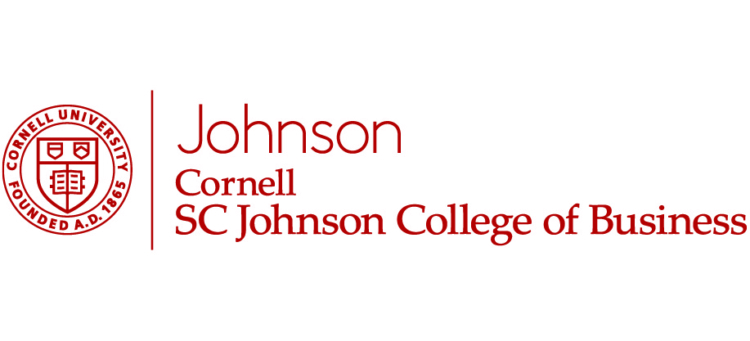Stanford’s executive education programs don’t follow a specific learning modality. Where an institution such as Harvard Business School relies on the case-study method, Stanford employs a broad mix of case studies, experiential learning, lectures, and discussions.
Weinstein acknowledges that participants are out of practice when it comes to learning. They respond better to a change in modalities and opportunities to get up and out of the classroom. For example, YPO (Young Presidents Organization) members go to a lot of executive education programs, and most of the ones who came to the GSB had already attended the HBS program. Stanford strives to offer programs that are more flexible and can be delivered in a relaxed way.
Stanford GSB runs about 23 open programs. In comparison, Harvard Business School boasts 88 separate programs while Wharton, another big player in exec ed, offers 52 programs. Last year, Stanford also ran about 50 custom programs. According to Weinstein, they are working on creating a tighter focus for custom programs, so they are deeper and consist of more modules per year.
Since the GSB’s initial support generally comes from high-ranking executives, they can work in a top-down model. They become a strategic resource for their companies. For instance, each time the school has run its program for Caterpillar, CEO Doug Oberhelma has spent a couple of hours with company employees who have enrolled. The program consists of five modules and is held four times a year in varying locations. “He told them it was his, program, his legacy,” Weinstein said. “As a result, we have an effective, productive relationship. We like to work with organizations where we have support at a senior level.”
Where is Executive Education Headed?
“It’s an incredibly competitive business,” Weinstein says. “ A lot of schools focus on what to do with technology. People have played with MOOCs, yet at Stanford, they’ve found that you can’t force feed people dense amounts of material.
“We try to use technology to create blended programs, which are more impactful than online programs,” Weinstein says. They create an experience that makes people feel they are part of something. But since it’s not always practical to gather everyone together in one place, Stanford uses virtual technology to bring participants together.
In September 2014, the GSB will offer what you might call a “mini MOOC” based on Stanford Professors Bob Sutton and Huggy Rao’s book, Scaling Up Excellence. It will be shorter in scope and duration than a traditional MOOC.
As technology becomes better able to deliver content, it’s important to consider how best to use classroom time, creating an environment that is more experiential—versus lecturing—and more focused on helping participants. Going forward, there will be a lot of experimentation to determine how to optimize classroom time. In any case, the GSB’s approach will remain a “high-touch” one, centered around personalized experiences and delivery of content.
“One challenge is how to make sure programs will have a lasting impact,” Weinstein says. He believes it’s critical to incorporate educational experiences that are applicable to participants’ work environments into the fabric of the program.
For custom programs, Stanford has companies define four to five strategic initiatives to work on. Then, over the course of six, eight, or nine months, participants are able to make meaningful changes within their organizations. For instance, in Caterpillar’s experience, after sending employees to Stanford, Oberhelma said he might not need to use consultants as much as he used to.
One constant struggle for Stanford is the representation of women. There are some exceptions. Programs on human resources or for women in leadership—versus finance—remain popular. Male participants are concerned about this issue as well. The participation of both men and women “causes people to approach a problem from a different point of view,” Weinstein says.
Risk-Taking Opportunities Abound
Stanford GSB is fortunate to have a lot of resources. They can create a lot of different experiences to see what works, what fits with an entrepreneurial model. They don’t have to outsource, as they have top-tier technology and the ability to conduct highly immersive classroom experiences.
The school tests and tweaks its technology constantly. The GSB recently held a three-hour virtual class with a Chinese cohort in China and an American one in the U.S. Whereas the Americans could talk all day and dominate the conversation, the Chinese had to be encouraged to speak up. But they both brought something to the experience.
“It’s a great place to be because we can focus on impact and try things,” Weinstein says. “Failure is okay. We are encouraged to experiment.”
More Interesting Programs in Pipeline
One interesting upcoming program is Customer-Focused Innovation, taught by Rao and Sutton. It entails classroom work (“clean mornings”) and then experiential work (“dirty afternoons”).
Class participants brainstormed a customer service idea for Jet Blue. The airline noted that passengers traveling with pets in baggage experienced more stress than other passengers. The students came up with the idea to place cameras in the baggage hold, so pet owners could watch videos of their animals from their seats. Passengers loved it. The program encouraged a greater understanding of processes and empathy for customers.
Stanford’s executive programs target senior people who are looking for more than just a certificate. They’re looking for innovative and practical ways to solve real-world problems. As a serial entrepreneur, Weinstein is helping ensure that Stanford can deliver on this promise.
DON’T MISS: HBX: How Disruptive To Business Ed? or The Master Chef Behind the Best Food in Executive Education





Questions about this article? Email us or leave a comment below.